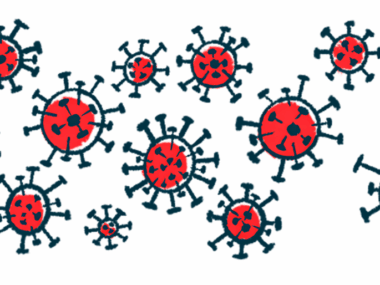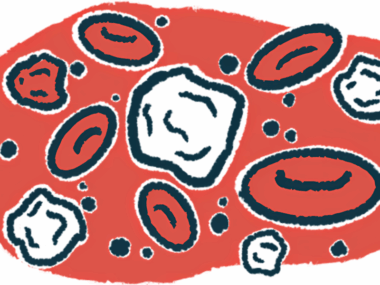Protein connexin 43 shows potential as treatment target for MS
INI-0602, which inhibits connexin 43, found to ease disease severity in mice
Written by |

Blocking the activity of a protein called connexin 43 (Cx43) may be an effective strategy to treat multiple sclerosis (MS), according to a recent study in animal models of the disease.
A compound called INI-0602, which was designed to inhibit this protein, significantly eased disease severity in mice, including in harder-to-treat chronic phases of disease. This was mostly achieved by a reduction in inflammation and in the entry of immune cells into the brain and spinal cord.
The study, “Astroglial connexin 43 is a novel therapeutic target for chronic multiple sclerosis model,” was published in Scientific Reports.
MS is a neurological disorder driven by inflammation in the brain and spinal cord. Studies have also shown that while many immune cell types are involved in this inflammatory attack, astrocytes, which are star-shaped cells that normally help to support nerve function, take on a pro-inflammatory state in MS that contributes to driving the disease.
Astrocytes in MS models have higher-than-normal levels of connexin 43
In previous research, a team of scientists showed that astrocytes in MS models have higher-than-normal levels of Cx43, which is involved in regulating inflammation and the connections between cells.
Based on their findings, the researchers hypothesized that targeting Cx43 might be a viable strategy to help treat the disease. Now, to test this idea, they used a molecule called INI-0602, which blocks Cx43 and other connexin proteins, in animal models of MS.
The team specifically used mice with experimental autoimmune encephalomyelitis (EAE), which is a lab-induced inflammatory disease with MS-like symptoms that’s commonly used to model MS.
When treatment was administered a few weeks after EAE was induced, when animals were already showing signs of hind limb weakness, INI-0602 significantly reduced disease severity and demyelination compared with a vehicle treatment (control). Demyelination, the hallmark of MS, refers to the loss of the myelin sheath that surrounds nerve fibers.
“Targeting Cx43 channels with specific blockers like INI-0602 could serve as a novel therapeutic strategy for chronic MS,” Ryo Yamasaki, MD, PhD, co-author of the study at Kyushu University in Japan, said in a university news story. “This, in turn, could facilitate the development of new treatments for patients with MS.”
Less inflammatory activity of astrocytes, immune cells in INI-0602-treated mice
Analyses of the mice’s brain and spinal cord indicated INI-0602-treated animals had substantially less inflammatory activity of astrocytes and of other immune cells that play a central role in MS. They also had notably reduced levels of the Cx43 protein in acute and chronic phases of the disease.
Further experiments indicated inflammatory astrocytes treated with INI-0602 undergo dramatic shifts in activity, transitioning from a pro-inflammatory state to an anti-inflammatory one and reducing secretion of pro-inflammatory signaling molecules.
“These results suggest that [blocking Cx43] prevents pro-inflammatory activation and promotes the anti-inflammatory reversion of [astrocytes],” the researchers wrote.
Collectively, the findings support Cx43 as a viable treatment target in MS.
“The blockade of [Cx43] activity in chronic lesions of MS patients might exert a therapeutic effect by suppressing neuroinflammation exacerbated by [increased] astroglial Cx43, and by inhibiting excessive immune cell infiltration into the [brain and spinal cord],” the scientists concluded.







